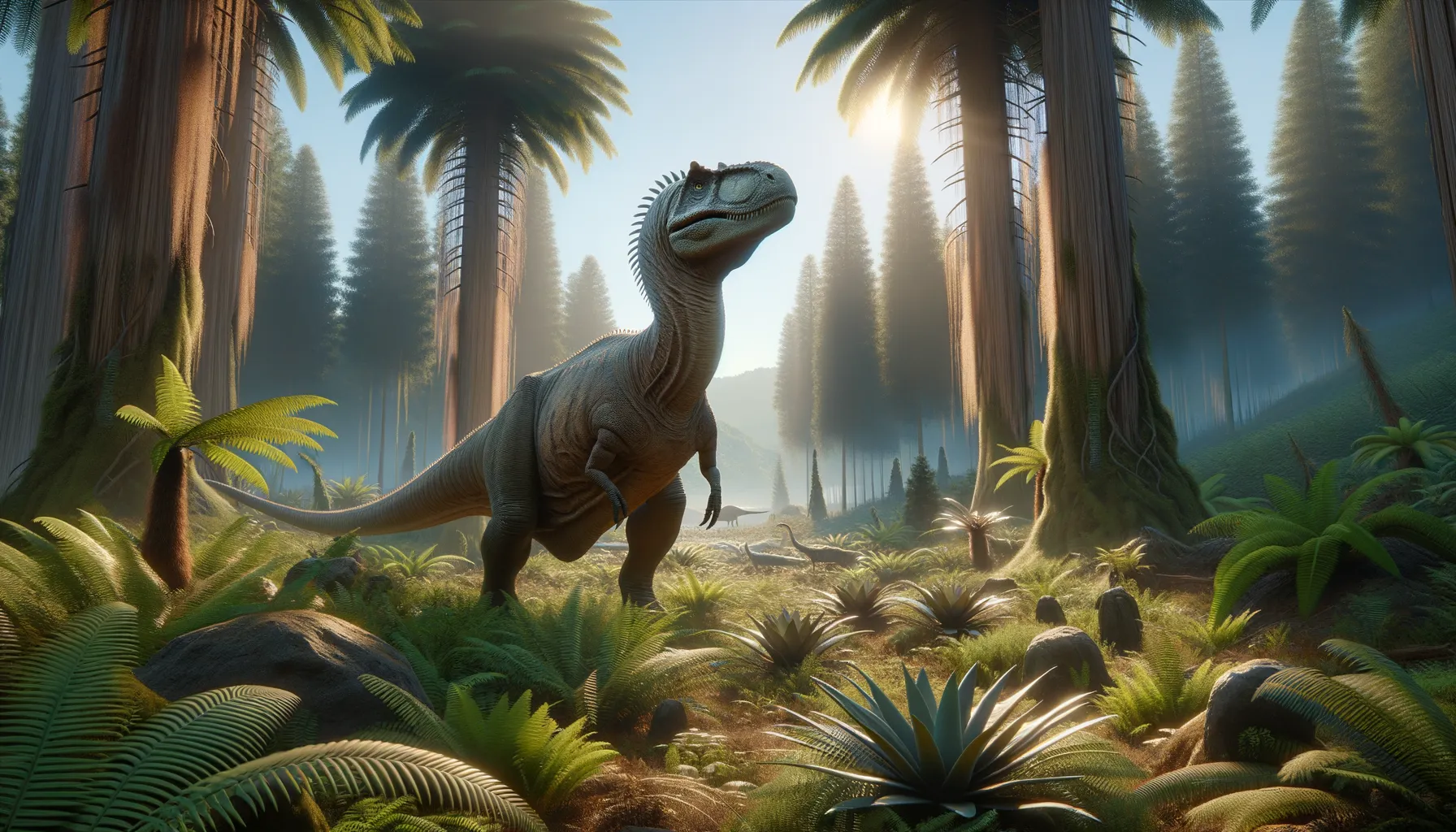
Niobrarasaurus
Armored against the Cretaceous threats!
Period
Cretaceous
Length
Roughly 15 feet long.
Height
Approximately 3 feet at the shoulders.
Weight
Around 1.5 to 2 tons.
The Niobrarasaurus was a heavily armored dinosaur from the Cretaceous period, known for its protective bony plates covering its body. It was part of the nodosaur family, featuring a low-slung build with a broad, flat body designed for grazing. While not fast, its defensive features and sturdy build helped it survive in its diverse environment.
Diet
Niobrarasaurus was an herbivore, feeding primarily on low-lying plants. Its diet likely consisted of ferns, horsetails, and other soft vegetation accessible near the ground. Its strong jaw and teeth were adapted to tearing and grinding these plants.
Hunting
As an herbivore, Niobrarasaurus did not hunt other animals but foraged for vegetation. Its primary defense from predators was its armored body rather than aggressive behavior. It likely traveled in groups to spot predators early and protect one another.
Environmental challenges
Niobrarasaurus lived during a time of significant environmental changes, with shifting continental positions and climate variations. These changes affected the types of vegetation available and required adaptability in its diet. It also faced the threat of larger predators that roamed the Cretaceous landscapes, making environmental awareness crucial for survival.
Speed
Slow-moving due to its heavy armor.
Lifespan
Estimated to live around 70-80 years.
First discovery
Found in Kansas during the 1930s.
Fun Facts
- Niobrarasaurus was a dinosaur that lived during the Late Cretaceous period, around 85 million years ago.
- This dinosaur was small compared to other armored dinosaurs, measuring about 15 feet (4.5 meters) in length.
- It belonged to a group of dinosaurs known as nodosaurids, which were characterized by their heavy armor plates.
- Niobrarasaurus was named after the Niobrara Formation where its fossils were discovered in Kansas, USA.
- Unlike some of its relatives, Niobrarasaurus had no tail club but used its armor as a defense mechanism against predators.
- The diet of Niobrarasaurus mainly consisted of plants, as evidenced by its flat, leaf-shaped teeth.
- This dinosaur is known primarily from a single skeleton, which has helped scientists learn more about its structure and way of life.
Growth and Development
Young Niobrarasaurus had to grow quickly to develop their protective armor against predators. Their growth likely required abundant food sources and careful navigation of their environment to reach maturity. As they grew, their bony plates hardened, providing essential defense.
Habitat
Niobrarasaurus inhabited areas that were part of a vast inland sea during the Cretaceous, now part of present-day North America. Its environment was mostly flat, featuring abundant low vegetation and occasional higher ground. Fossil records suggest it was adapted to both coastal and forested areas.
Interaction with other species
Niobrarasaurus likely coexisted with other herbivorous dinosaurs, possibly forming mixed-species herds for protection. It had to remain vigilant against predatory dinosaurs like Tyrannosaurs, which threatened even armored dinosaurs. Competition for resources might have shaped its social behavior and foraging strategies.
Natural lifespan
Niobrarasaurus had a natural lifespan of approximately 70 years.
Reproduction
Reproduction likely involved laying eggs in nests, similar to other dinosaur species. The location of egg sites was crucial, requiring hidden or protected areas to ensure the young could safely emerge and grow. Parental care might have been minimal after birth, relying on timing and environment for survival.
Social behaviour
It possibly lived in small social groups or herds, which offered safety in numbers from predators. Social interaction would have been crucial, especially in environments with limited resources. These behaviors helped strengthen the community and provided coordinated alerts to danger.
Fossil locations
Fossils have predominantly been found in Kansas, contributing to our understanding of its geographical range. The location hints at its adaptation to coastal and open landscapes. These finds play a significant role in reconstructing its ecological setting during the Cretaceous period.
